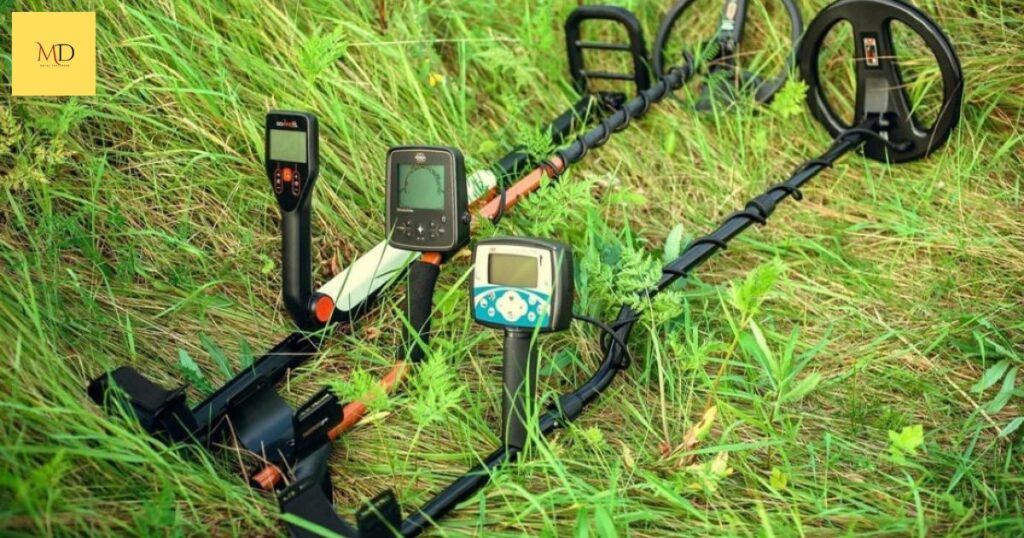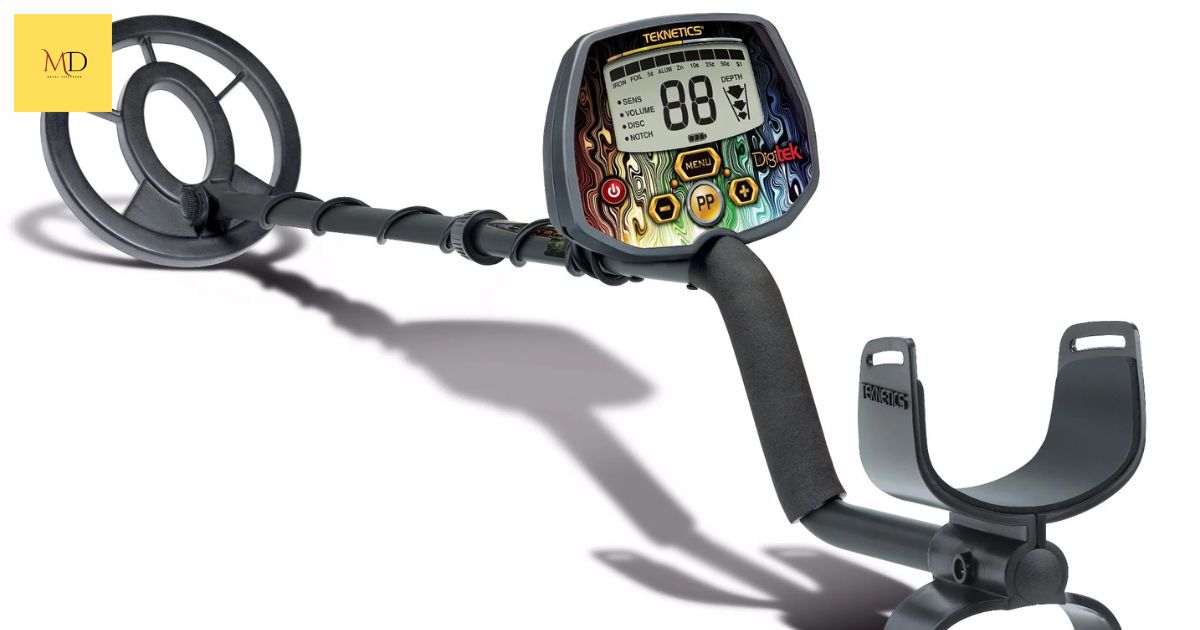A metal detector is a device that detects the presence of metal objects, typically buried underground or concealed within other materials. It operates by emitting an electromagnetic field, and when a metal object disrupts this field, the detector alerts the user, often with an audible or visual signal. Metal detectors are commonly used for finding buried treasures, archaeological artifacts, and security purposes in airports and public places.
Unlock hidden treasures and embark on your own treasure hunt adventure. Discover the secrets of metal detecting with the Bounty Hunter Metal Detector the perfect tool for unearthing precious artifacts and lost valuables. Learn how to use the Bounty Hunter Metal Detector to become a modern-day treasure hunter, and start your journey to finding hidden gems today.
Using the Bounty Hunter Metal Detector is a straightforward process. Begin by assembling the device, power it on, and adjust the settings as needed. Slowly sweep the coil over the ground, listening for the distinctive beep or watching the visual indicator. When it signals a metallic object, pinpoint its location and dig carefully to uncover your find. It’s a fun and rewarding hobby for both beginners and experienced treasure hunters.
Getting Started
Before you embark on your treasure hunting journey with the Bounty Hunter Metal Detector, it’s essential to familiarize yourself with the basics. Start by unboxing the device and carefully assembling it according to the manufacturer’s instructions. Most models are relatively simple to put together and require no special tools. Once you’ve got your metal detector ready, make sure you insert the appropriate batteries and power it on.
Familiarizing yourself with the various components, such as the control panel and the search coil, is crucial for a successful start. The more you understand how your device works from the get-go, the smoother your metal detecting experience will be. As you begin your journey into metal detecting, remember that patience and practice are key. Take the time to learn how to operate your Bounty Hunter Metal Detector effectively and make necessary adjustments according to your preferences and the specific environment you’re exploring.
Adjusting Settings
When it comes to metal detecting with the Bounty Hunter Metal Detector, mastering the art of adjusting settings is crucial for success. The control panel on your device offers a range of options, and understanding how to make the right selections can significantly impact your findings. You can start by choosing the appropriate search mode based on your objectives, whether it’s finding coins, relics, or jewelry. Additionally, setting the discrimination and sensitivity levels is vital to filter out unwanted items and enhance your detector’s ability to identify valuable targets.
To get the most out of your Bounty Hunter Metal Detector, it’s essential to experiment with different settings in various environments. Fine-tuning your detector’s sensitivity to match the ground conditions and target types will greatly boost your chances of unearthing hidden treasures. Remember that practice makes perfect, and as you become more proficient at adjusting settings, you’ll find that the Bounty Hunter Metal Detector becomes a reliable companion in your pursuit of valuable and historical discoveries.
Techniques for Successful Metal Detecting

Effective metal detecting hinges on employing the right techniques to maximize your chances of unearthing hidden treasures. One crucial technique is maintaining the correct coil height and ensuring proper ground balancing. Keeping the coil close to the ground allows for better sensitivity, while ground balancing helps filter out interference from minerals in the soil. Additionally, mastering the sweeping motion is vital.
To cover the ground systematically, swing the detector in an arc from side to side, overlapping your sweeps to ensure no area is missed. Using headphones can enhance your experience, as you’ll hear faint signals more clearly, increasing your chances of discovering valuable items. A key skill in metal detecting is the ability to decipher the audio and visual signals emitted by your Bounty Hunter Metal Detector. Different tones or visual indicators can signify various types of metals.
Detecting and Identifying Targets
Detecting and identifying targets is a crucial aspect of using the Bounty Hunter Metal Detector effectively. When you sweep the coil over the ground, you’ll hear distinct audio signals and see visual cues on the device’s display. These signals can vary in intensity and tone, depending on the type of metal the detector encounters. By paying close attention to these signals, you can differentiate between various metals like coins, jewelry, and relics.
The discrimination feature on the Bounty Hunter Metal Detector allows you to filter out unwanted items like nails or bottle caps, ensuring that you focus on the valuable targets. Additionally, pinpointing features help you precisely locate the target’s position, making it easier to dig and retrieve your finds. Successful metal detecting relies on your ability to interpret these signals, becoming attuned to the unique sounds and patterns associated with different metals. Over time and with practice, you’ll become more proficient in recognizing valuable targets, which adds to the excitement and satisfaction of the hobby.
Digging and Retrieving
Digging and retrieving are crucial aspects of successful metal detecting. Once your Bounty Hunter Metal Detector signals a potential target, it’s time to unearth your find. To do this, you’ll need a few essential tools, such as a trowel or digger, a handheld pinpointer, and a pouch to store your discoveries. When you’ve located the target, dig carefully and methodically, ensuring that you disturb the surrounding area as little as possible. This not only preserves the historical context of your find but also makes it easier to fill the hole afterward, leaving the area undisturbed.
When you’ve successfully retrieved the object, be sure to clean it gently and document the details, including the date, location, and any relevant information. Properly recording your finds can contribute to your metal detecting journey’s historical and personal significance. Additionally, always follow ethical practices by filling in the hole and leaving the area as you found it, respecting the environment and private property rights while enjoying the thrill of treasure hunting.
Tips for Maximizing Success
When it comes to metal detecting, a few tips can go a long way in ensuring your success. One key aspect is choosing the right locations. Research and select areas with a history of human activity, such as parks, beaches, or old homesteads, as these are more likely to yield interesting findings. Weather conditions matter too; consider detecting after rainfall when the ground is soft, making it easier to dig. Additionally, joining a metal-detecting community or online forum can be invaluable.
Here, you can gain insights from experienced enthusiasts, get recommendations on hotspots, and even learn about the latest equipment and techniques to enhance your treasure-hunting journey. Success in metal detecting also hinges on being respectful and responsible. Always obtain permission before detecting on private property, and follow any local laws and regulations regarding the hobby.
Necessary Tools and Accessories
When it comes to metal detecting, having the right tools and accessories can make a world of difference in your success and enjoyment. The most essential tool, of course, is your Bounty Hunter Metal Detector itself. Additionally, a sturdy and comfortable pair of headphones is crucial for hearing those subtle beeps and signals that indicate potential treasures hidden beneath the surface.
A digging tool, like a trowel or a handheld shovel, is indispensable for excavating your finds. Many metal detectorists also use a pinpointer, a small handheld device that helps locate the exact position of a detected object, saving time and minimizing damage to the surrounding area. Carrying your equipment is made easier with a good-quality finds pouch or bag, which keeps your discoveries organized and your hands-free for digging.
Recording Finds and Their Locations
Recording your finds and their locations is a crucial aspect of metal detecting. Once you’ve successfully uncovered a hidden treasure or artifact with your Bounty Hunter Metal Detector, it’s important to document the discovery. This not only helps you keep a record of your finds but also contributes to the historical and archaeological understanding of the area you’re exploring.
Using a notebook or a metal detecting app, note down details such as the date, the specific location (GPS coordinates or landmarks), and a description of the item. This documentation can be invaluable in tracking your progress and sharing your discoveries with fellow enthusiasts and local authorities if necessary. By meticulously recording your finds and their locations, you not only preserve the history and context of your discoveries but also ensure that you’re following responsible and ethical metal-detecting practices.
FAQ’S
How do you operate a metal detector?
To operate a metal detector, first, assemble the device, power it on, and adjust the settings as needed.
Do metal detectors detect gold and silver?
Yes, metal detectors can detect both gold and silver, as these metals are conductive and can disrupt the electromagnetic field generated by the detector, triggering a response.
Do metal detectors detect gold?
Yes, metal detectors can detect gold, as gold is a metal and has conductive properties that can be picked up by metal-detecting equipment.
Conclusion
Metal detectors are versatile tools that have a wide range of applications, from treasure hunting to security and archaeological research. They have evolved to become more user-friendly, efficient, and precise over the years. Whether you’re a beginner or an experienced enthusiast, understanding how to use a metal detector, adjusting its settings, and employing proper techniques is key to a successful and rewarding experience.
With the right knowledge and techniques, you can embark on exciting adventures, uncover hidden treasures, and contribute to the preservation of history and culture. Remember to follow the legal and ethical guidelines for metal detecting in your area, respect the environment, and always record your finds and their locations. So, grab your Bounty Hunter Metal Detector and start your journey to discovering the exciting world beneath your feet. Happy hunting.











